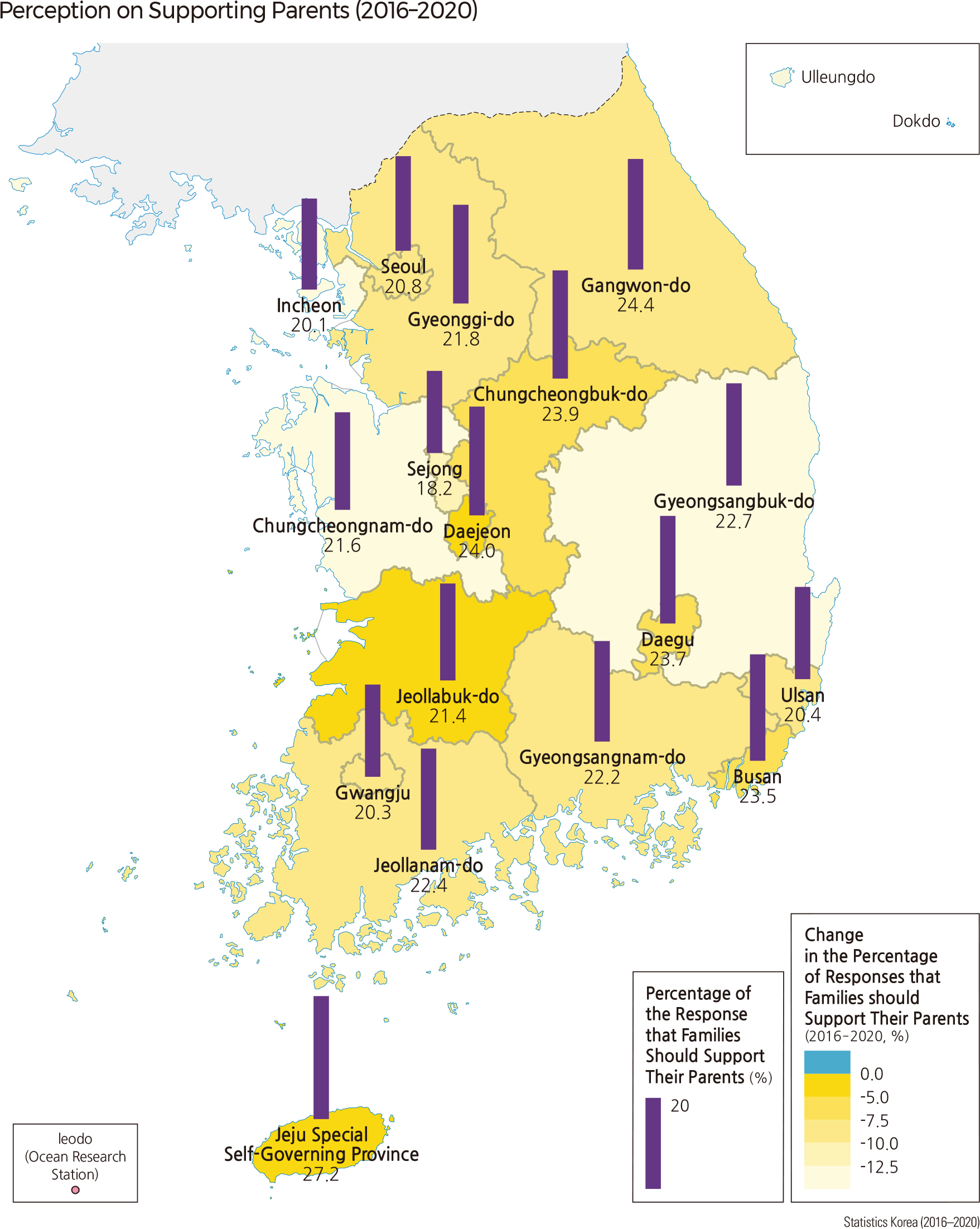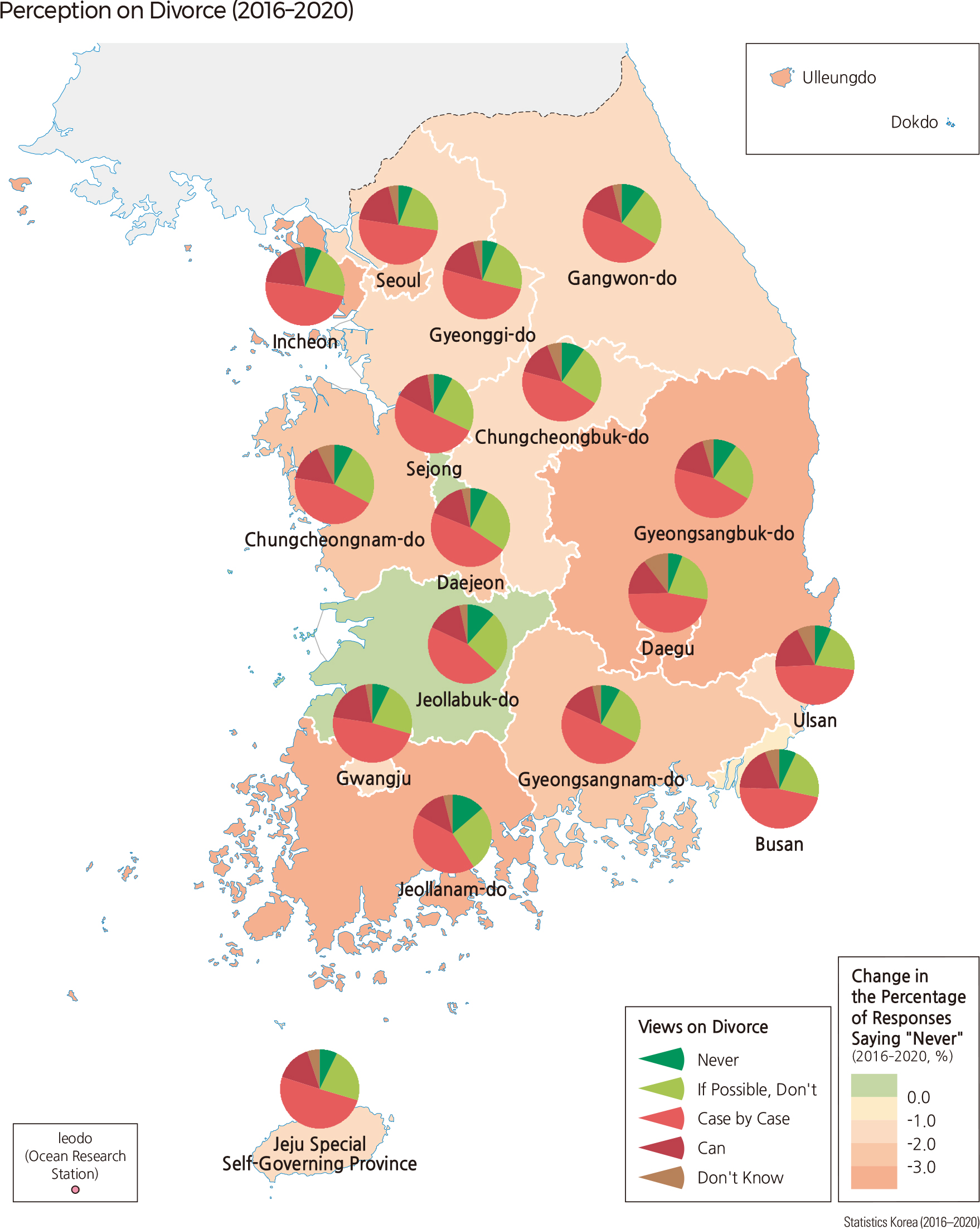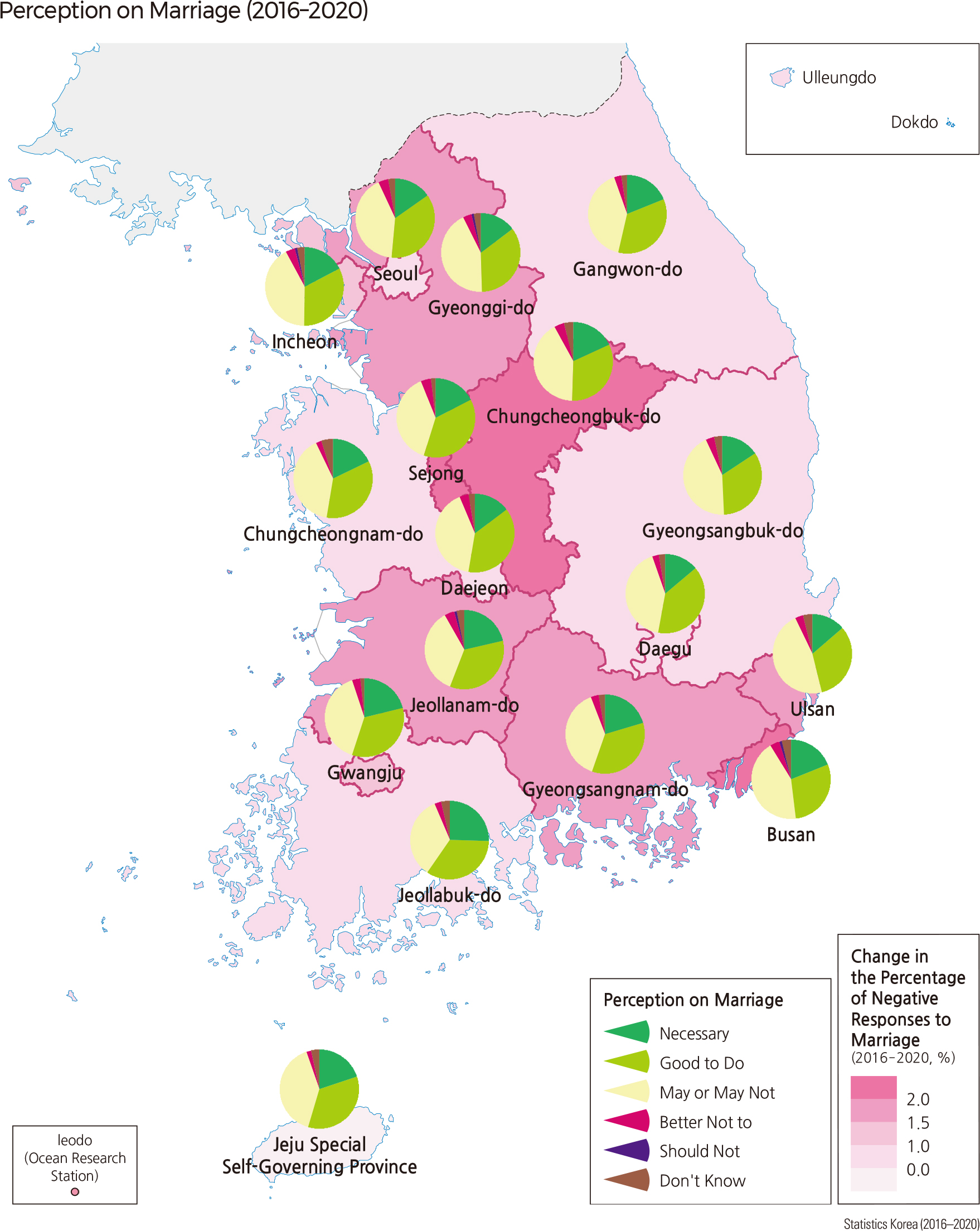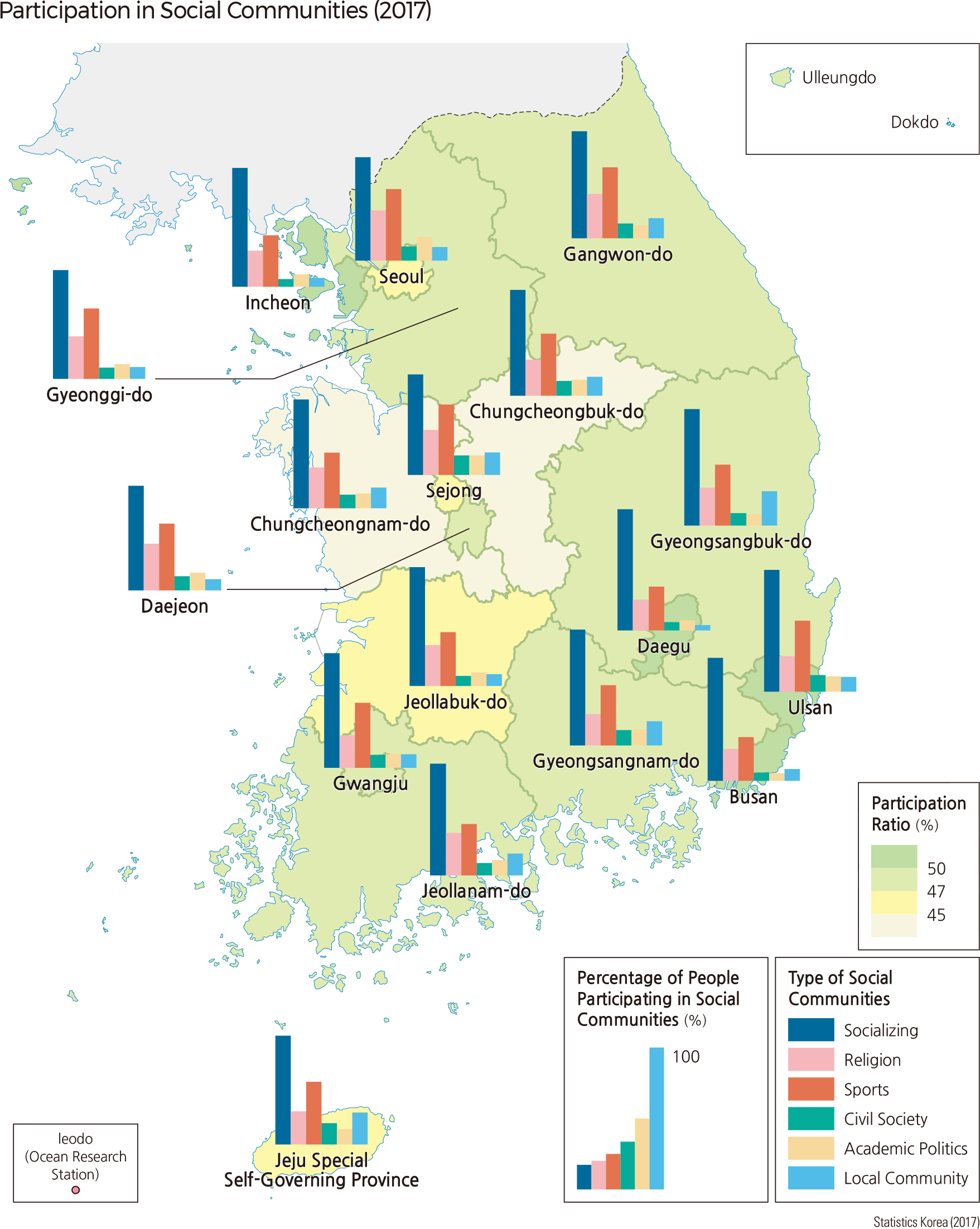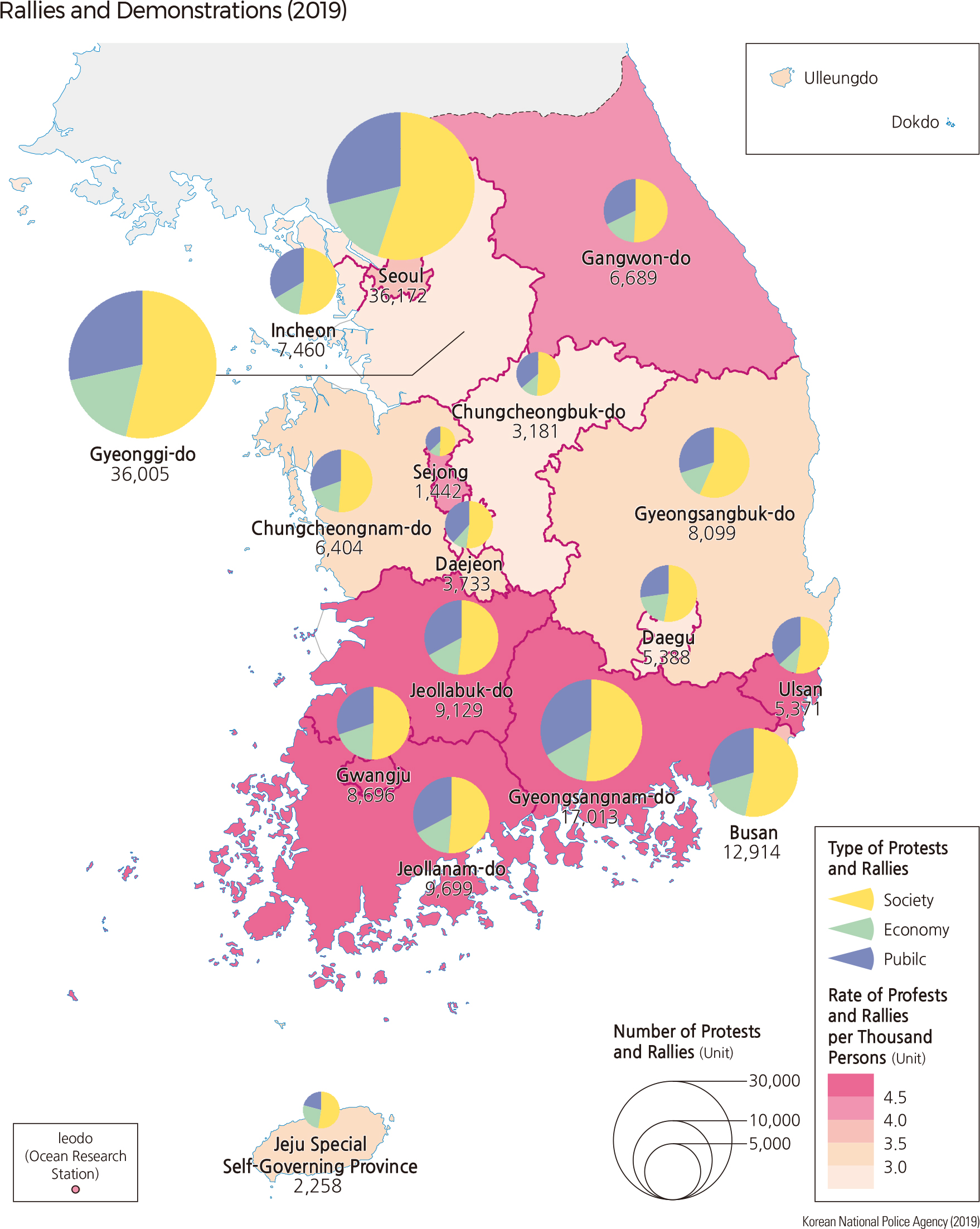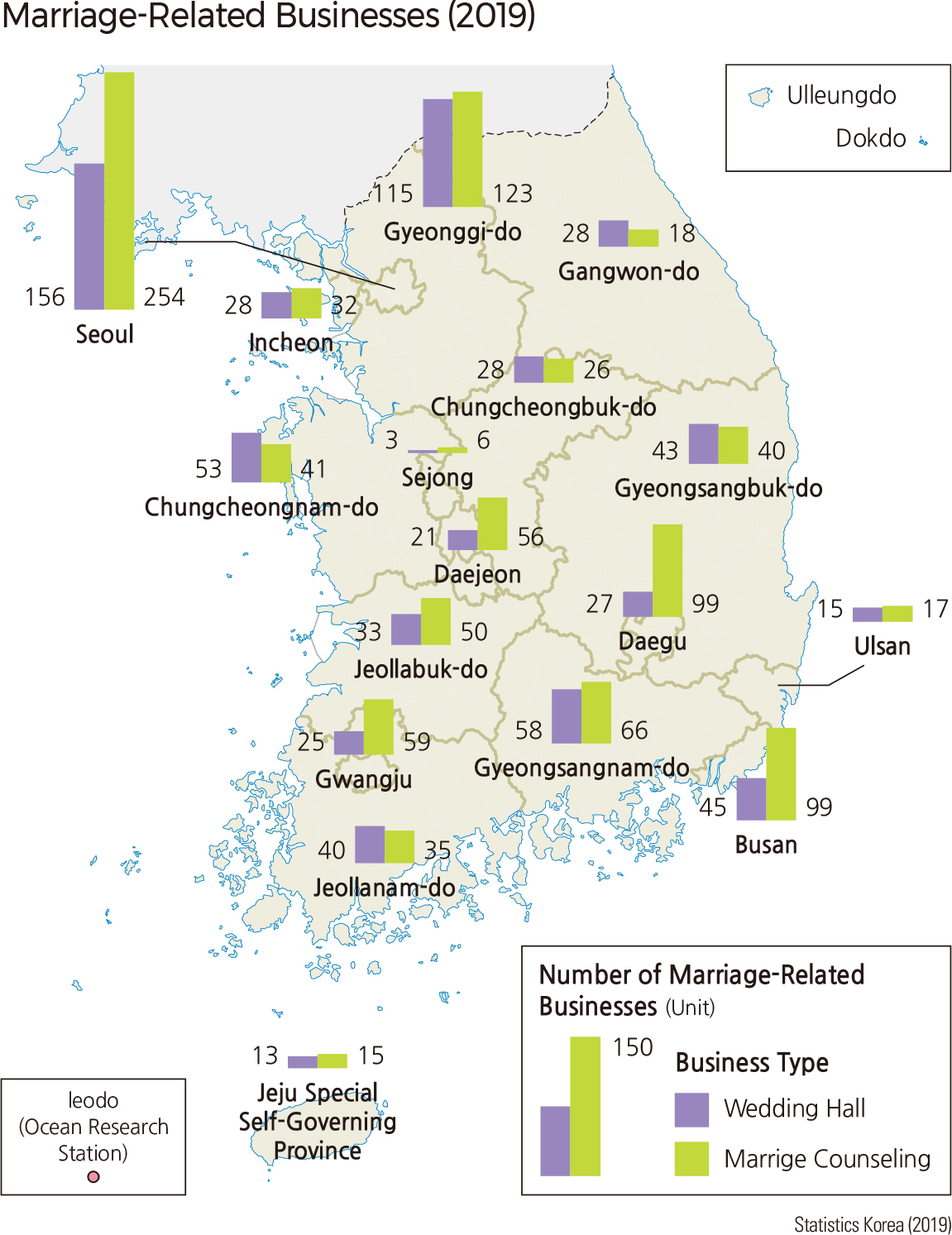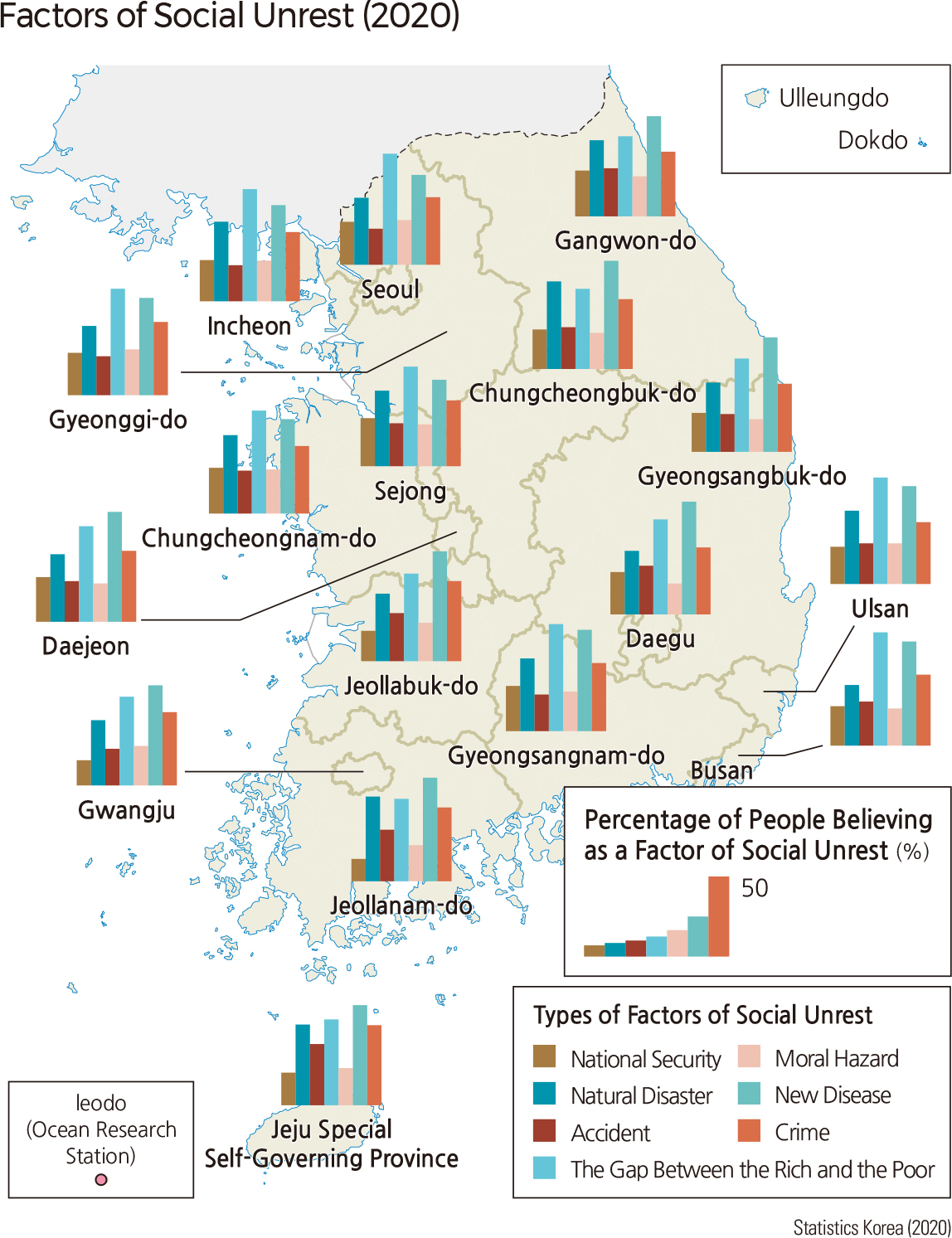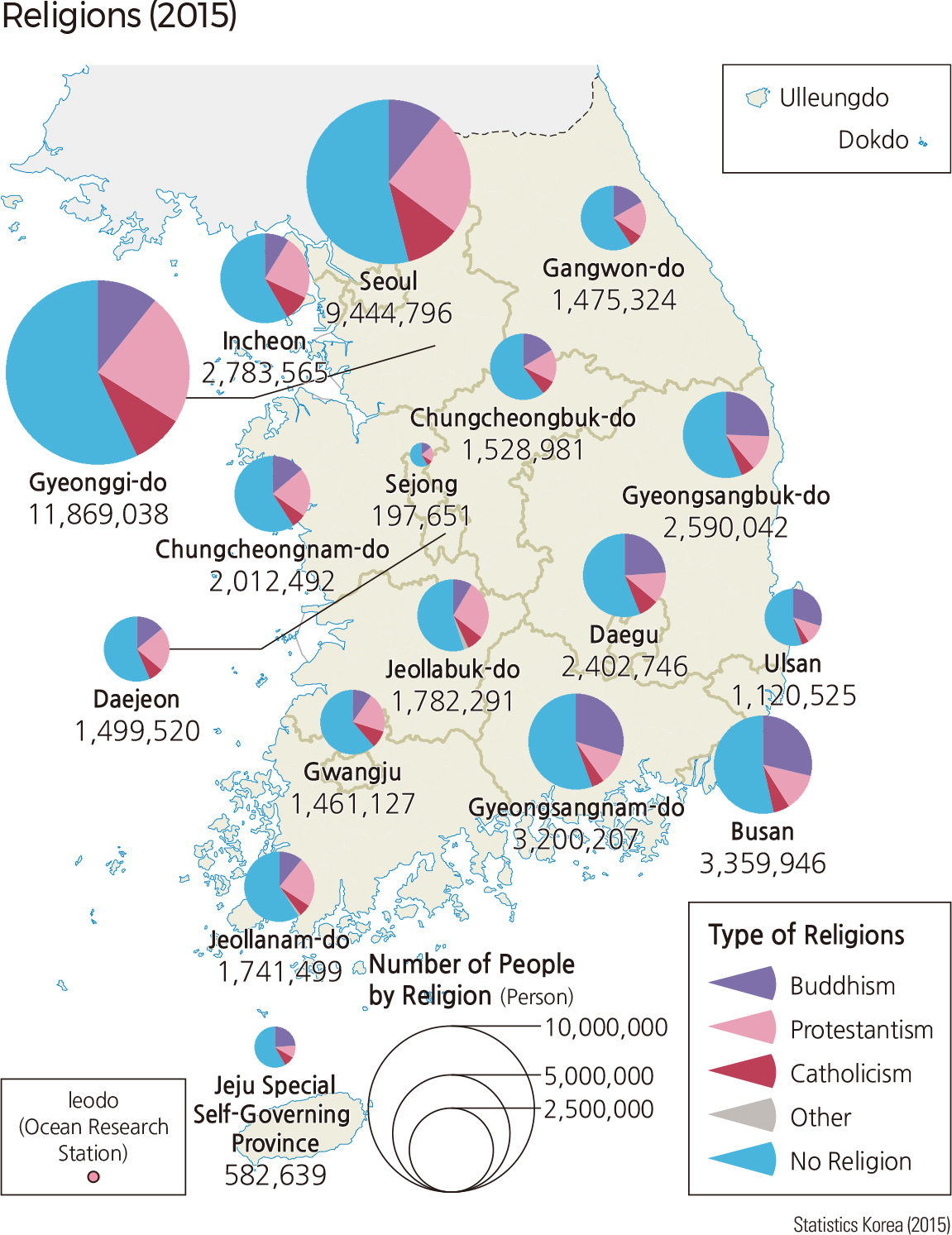English III 2021
Korean society has undergone rapid changes, which are reflected in the social perceptions and behaviors of its people. For example, attitudes towards supporting parents have also changed rapidly. In recent years, there has been an increasing notion that parents should be supported by a combination of family members, the government, and the society, away from the traditional Confucian culture where family members support their parents. As a result, only 20 to 30% of the people think that family members should support their parents, and such perceptions have rapidly diffused to all cities and provinces from 2016 to 2020. The Confucian culture that led to the negative perception about divorce is also changing rapidly. The proportion of people who are advocates of divorce spans from 13 to 20%, depending on the cities and provinces. The proportion of people who believe that no one should get divorced for any reason spans from 6 to 14%. From 2016 to 2020, the proportions have decreased from 1 to 4% in most cities and provinces. Opinions on marriage are similar to that. 46 to 59% of people think that one must get married or it is better to get married, depending on the cities and provinces. Those who think that it is fine not to get married or that one should not get married account for 2.4 to 5.1%, and the percentage has increased up to 3% from 2016 to 2020 in most regions. A survey regarding unsettling factors in Korean society also reveals the difference between generations. The younger generation has higher anxiety about crime. In comparison, the older generation believes that national security, natural disaster, and new diseases are worrisome. Among those in the 20s to 50s-age range who are the most active participants in economic activities, the gap between the rich and the poor and economic risk is considered the most problematic social unsettling factor. The degree to which those at higher educational institutions, such as college or high school students, prefer large companies was lower than middle school students. On the other hand, the degree of preference on the employment in public enterprises, those who attended college or higher education showed higher preferences than those at lower education. Also, most young adults and adolescents preferred to get a job at government organizations, and especially females preferred to work for government organizations or public enterprises. The fact that nearly half prefer to work for government organizations or public enterprises reflects people’s anxiety about the Korean economy that has entered a phase of low economic growth. The social life of Koreans has rapidly shifted from the family and village-oriented communities of the past to a more urban way of life. This change in the social fabric carries with it a variety of forms of social participation. Fraternal societies and social clubs and religious and hobbies-based activities are increasing. Many Koreans work in non-governmental organizations and join political parties and interest groups. Community activity is increasing as well. In addition to institutionalized political activities such as voting and joining political parties as a way of expressing civil rights and opinions, Koreans are raising their voices in protests or participating in rallies in greater numbers. The focus of rallies and demonstrations, which had been on achieving democracy and securing labor rights, has diversified into concern about the environment, women’s rights, and regional development. In addition, the types of rallies have grown to include demonstrations, marches, and cultural festivals. Rallies and demonstrations mainly target government or government agencies that are concentrated in the Seoul area. Korean religion has undergone radical modernization. Confucianism and Buddhism influenced values and attitudes toward life in the past, and traditional religions were widely practiced in the daily lives of the Korean people. Christianity introduced by missionaries during the late Joseon Dynasty has rapidly expanded with the modernization of Korea, and Protestantism and Roman Catholicism have gained parity with Buddhism. Christian congregations rapidly expanded until 1995, but the number has stagnated since the 2010s. Roman Catholic and Buddhist populations have decreased recently. The most remarkable change in types of religion is the rapid increase of atheists, reflecting an increased negative notion about religious groups and religious life. The religious population also varies by region. For example, the proportion of Christians is higher in Seoul and the southwestern part of Korea, while the proportion of Buddhists is higher in the southeastern part of Korea. |
